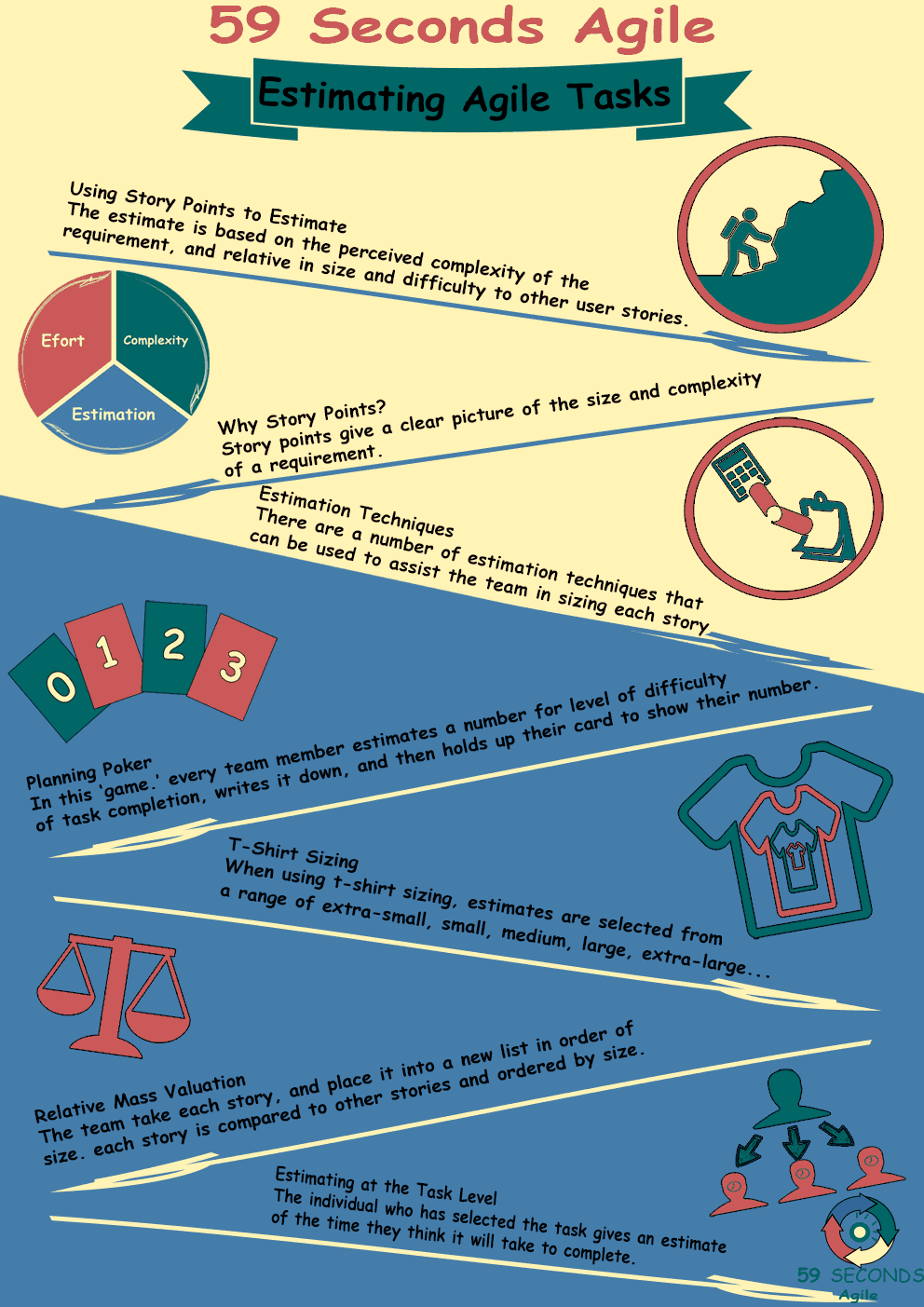Estimating Techniques
A 59 Seconds Agile Training Video
Continue to Part 6 Below
Estimating Techniques in Scrum
A 59 Seconds Agile Article
This article provides an ‘Introduction into Estimating Techniques’ and looks to discuss the different approaches to estimation and the benefits of each approach.
Story Points Advantages
Story points have several advantages.
Firstly, estimating absolute values is difficult whereas estimating relative values is a more achievable task, thus story points allow for more accuracy in estimation.
Secondly, teamwork is stimulated by discussion about the number of story points, which occurs among all development team members.
Thirdly, the abstract nature of story points limit external stakeholder or managerial influences surrounding time estimations, and in turn allows the team to remain protected from outside pressures.
Finally, estimating the size of a task allows people of the same speciality to agree on the ‘weight’ of the task, but vary in personal ‘productivity’.
While story points appear to have convincing strengths, the strategy also has some disadvantages that should be considered before choosing story points.
Firstly, when starting to use story points they can be unfamiliar and uncomfortable for a team, which can result in group resistance.
Secondly, beware of inflated story points. This may happen, even when a team is working at maximum capacity and things that should be low numbers become higher, it may foster an environment of deceit.
Finally, managers may have difficulty understanding what story points are, and may punish one team for not being as productive as the other.
Continue Reading —> Next
Estimating Techniques
A 59 Seconds Agile Video Animation
Continue Reading —> Next
User Stories Applied
A 59 Seconds Agile Book Review
User Stories Applied by Mike Cohn is one of our favourite books on Agile User Stories. The book starts with an overview into user stories, and details what a user story is and the different aspects of them. He then discusses how to go about writing a user story, and provides details of the INVEST criteria that can be used to determine if the story is meeting all of its objectives. Next Mike gives an in depth discussion of who user stories are written for and where to begin when gathering the details for them. The book then discusses acceptance testing user stories, including how to go about specifying these criteria and the responsibilities of the development team and customers during this process.
Continue Reading —> Next
Estimating Techniques
A 59 Seconds Agile Infographic

Continue Reading —> Next
Agile Scrum Master Training Course
Our Favourite Agile Books
We found these books great for finding out more information on Agile Scrum:
Continue Reading —> Next


